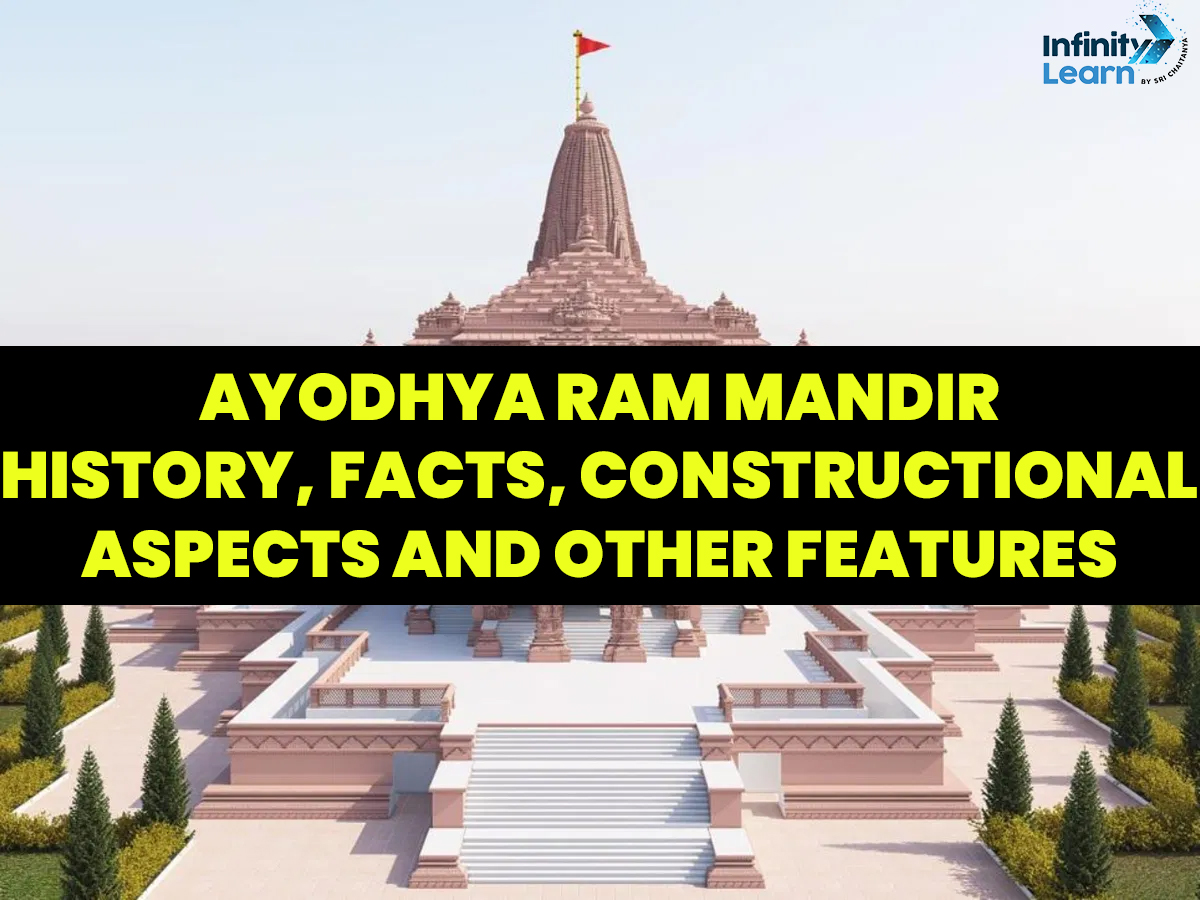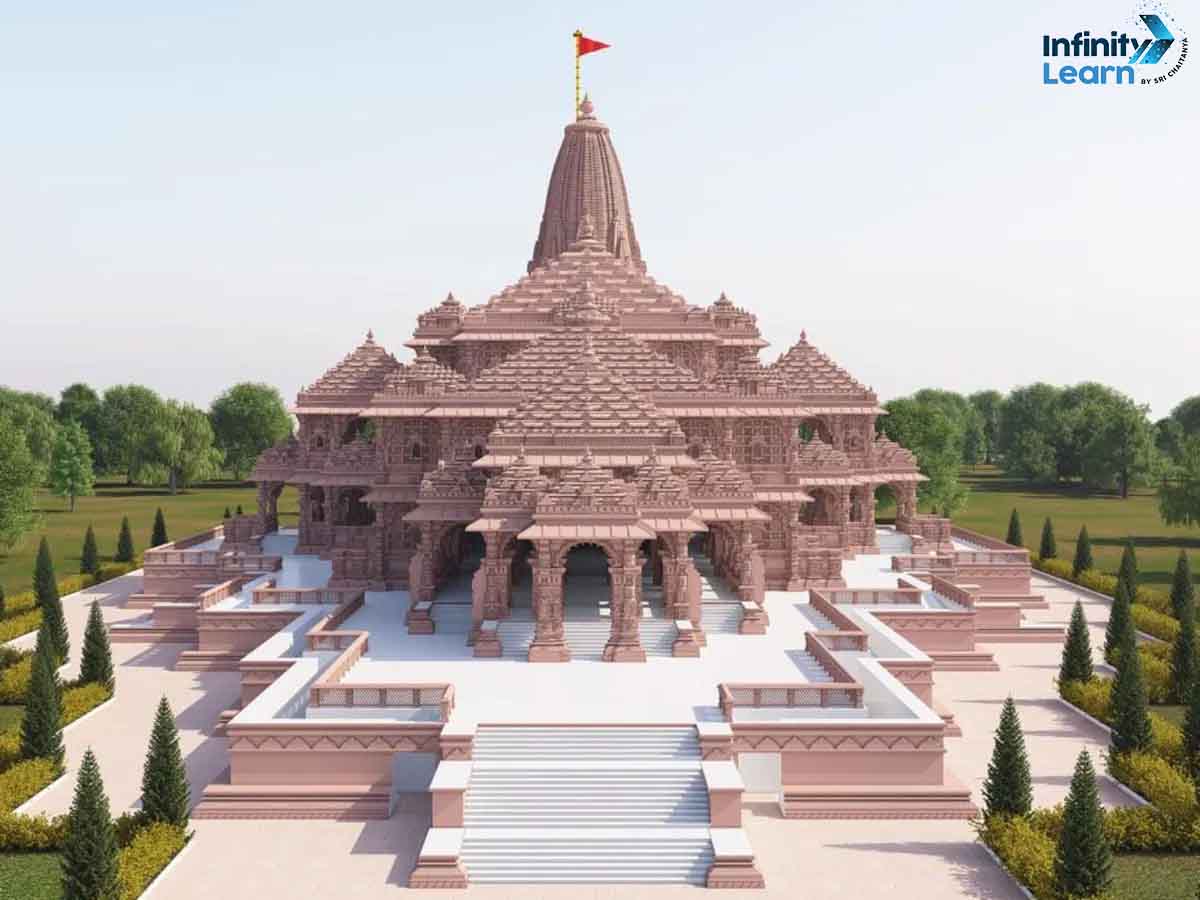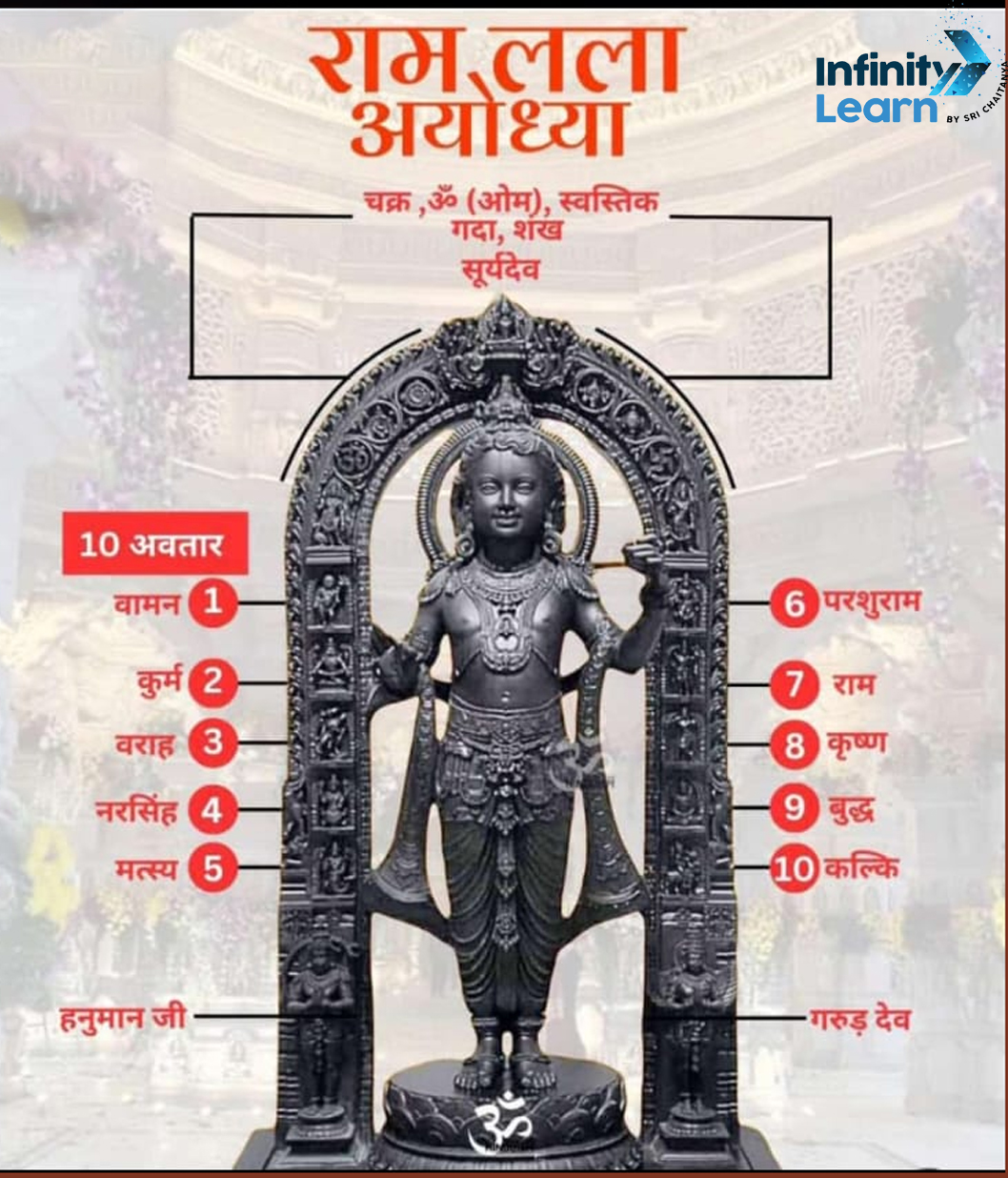Table of Contents
The Ayodhya Ram Mandir has drawn a lot of controversy for years due to the alleged misuse of donations, sidelining of major activists, and politicisation of the temple by different political parties. This year, the ancient city of Ayodhya will resonate with chants and celebrations as it witnesses the inauguration of the Ayodhya Ram Mandir. India’s historically and spiritually rich city, Ayodhya, has long been connected to religion.

In the Indian state of Uttar Pradesh, near the banks of the holy river Saryu Ayodhya city is situated. Ayodhya Ram Mandir is a Hindu temple located in this city, and the site is believed to be Ram Janmabhoomi. The grand opening date of Ayodhya Ram temple is scheduled for the 24th of January 2024. It is the world’s third-largest Hindu shrine.
Every year, during Diwali, as the lamps light up streets and homes, people across India celebrate the symbolic homecoming of Lord Rama, a revered deity in Hinduism. It is a historic occasion, marking his return to Ayodhya after a 14-year exile and his victory over the demon king, Ravana. The history of Ayodhya Ram Mandir is deeply rooted in India’s rich cultural and religious faith.
Click Here: GK Questions on Shivratri 2024
Ayodhya Ram Mandir History

The origin of the Ayodhya Ram Mandir can be traced back to the ancient Hindu epic, Ramayana. According to the epic, Ayodhya is the birthplace of Lord Rama. However, over the centuries, various structures were built and demolished at the site. In the 16th century, Mughal Emperor Babur, during his series of temple raids across northern India, attacked and destroyed the ancient temple, including the Janmasthan temple located in the site. Later, the Mughals constructed Babri Masjid mosque on the same site, which is believed to be the site of the Ram Janmabhoomi, the birthplace of Rama.
Demolition of Babri Masjid
In 1992, a large group of armed Hindu nationalists broke through barricades around the Babri Masjid and destroyed the mosque, leading to communal riots across the country. Babri Masjid, a 16th-century mosque built in Latifi’s hometown of Ayodhya in northern India, when the Mughals ruled India. The demolition of the Babri Masjid marked a significant and controversial event in Indian history, ultimately influencing the legal battle and subsequent construction of the Ayodhya Ram Mandir.
Important Facts about Ram Mandir
Ayodhya Ram Mandir Controversy
In the late 20th century, the Babri Masjid, which stood at the disputed site, became a focus point of tensions between Hindus and Muslims religion. Several critics also claim that the location of present-day Ayodhya was originally a Buddhist site, based on its similarity to Saketa described in Buddhist texts. In 1853, a group of armed Hindu ascetics belonging to the Nirmohi Akhara took over the Babri Masjid site, claiming ownership of the structure, leading the civil administration to step in.
In 1855, civil administration divided the mosque premises into two parts: one for Muslims and the other for Hindus. In 1883, the Hindus introduced an effort to build a temple on the platform. Later, they took the matter to court when the administration denied them permission to construct the temple, but the court dismissed the matter. In December 1949, after placing idols of Rama and Sita in the mosque, Hindus claimed to appear there miraculously. Thousands of Hindu devotees started visiting the place, which led the government to declare the mosque a disputed area and lock its gates. The legal battle over land ownership continued for years. In 2019, the landmark Supreme Court judgment granted the site to the Hindus to construct the Ram Mandir.
Ayodhya Ram Mandir Construction

Following the Supreme Court’s verdict, the Ayodhya Ram Mandir construction started in full swing. The land was allocated to the Ram Mandir Trust, empowering the Government of India to oversee the formation of the Ayodhya Ram temple. The government allocated the necessary budget for construction. The total land allocated to the trust spans 70 acres, housing several temples dedicated to deities like Lord Shiva, Lord Ganesha, and others.
Ayodhya Ram Mandir construction commenced shortly after the groundbreaking ceremony, and the Ayodhya Ram Mandir foundation stone was laid on the 5th of August 2020. The architectural design is deeply rooted in Hindu tradition, with a special unique inscription, “Jai Shree Ram”, used in constructing the temple. The Larsen & Toubro group is responsible for building the Ayodhya Ram temple, which is estimated at Rs 18,000 crore. The construction project has gained immense support from people all over India and the world, with contributions from devotees and well-wishers.
Ayodhya Ram Mandir Design
The chief architect of the Ayodhya Ram temple is Chandrakant Sompura, who is from Ahmedabad and was assisted by his two sons, Nikhil Sompura and Ashish Sompura. With some changes from original, a new design was prepared by the Sompuras family in 2020, per the Hindu texts, the Vastu shastra and the Shilpa shastras.
Situated on the banks of the sacred Sarayu River, the Ayodhya Ram Mandir is strategically located in the heart of Ayodhya. The 2.7-acre main Ayodhya Ram temple complex will be home to the holy idol of Lord Rama. On a raised platform Ayodhya Ram Mandir construction is being done and spans three levels. The Ayodhya Ram Mandir is being built on the principles of Vastu Shastra and Shilpa Shastras, an ancient Indian architectural science. The temple’s dimensions are impressive, measuring 235 feet wide by 360 feet long by 161 feet high. 360 pillars support the entire structure, each contributing to the Ayodhya Ram Mandir’s structural integrity and visual grandeur. It is constructed in the Gujarat-Chaulukya religious architectural style of Northern Indian.
15 Key Features of Ram Mandir in Ayodhya
- The main sanctum of Shri Ram Mandir features the idol of Shri Ram Lalla, representing the infant form of Lord Shri Rama.
- The first floor houses the Shri Ram Darbar.
- The temple is designed with 5 Mandapas: Nritya Mandapa, Rang Mandapa, Sabha Mandapa, Prarthana Mandapa, and Kirtan Mandapa.
- Four temples dedicated to Suryadev, Mother Bhagwati, Lord Ganesha, and Lord Shiva will adorn the corners of the periphery (Parikota).
- In the northern arm, there will be a temple dedicated to Goddess Annapurna, and in the southern arm, a temple honoring Lord Hanuman will be erected.
- Other temples within the complex will pay homage to revered figures like Maharishi Valmiki, Maharishi Vashishta, Maharishi Vishwamitra, Maharishi Agastya, King Nishad, Mata Shabari, and Devi Ahilya.
- The temple premises will include the Sita Kup.
- With meticulous planning, the temple features 44 gates; 18 boast intricately crafted doors, and 14 are adorned with gold, symbolising its sacred significance. The temple can be accessed through three distinct paths: Ram Janmabhoomi, Bhakti, and Ram.
- Renovation plans for the ancient temple of Lord Shiva on the Navratna Kubera Hill in the southwest, along with the installation of a Jatayu statue.
- Shri Ram Mandir, besides serving as a symbol of religious faith, stands out as an impressive architectural masterpiece.
- It reflects India’s spiritual heritage and the enduring legacy of Lord Rama, contributing to Ayodhya’s status as the spiritual capital of India.
First Glimpse Of Lord Rama’s Idol Revealed

The exciting moment we’ve all been waiting for is here – the first look at Lord Rama’s idol has been revealed. It’s a special and sacred occasion as everyone gets to see the divine image of Lord Rama for the first time. People, both devoted and curious, are filled with awe and respect as they witness this significant moment. This unveiling is a big deal, bringing everyone together to celebrate and reminding us of the deep cultural and religious meaning that Lord Rama holds in our hearts.
Conclusion
For many, a visit to the Ayodhya Ram Mandir is a pilgrimage to the heart of India. It welcomes not just the devotees but also the curious, the historians, and the seekers. In addition, the Ayodhya Ram Mandir has the potential to become a catalyst for Ayodhya’s economic revival. Furthermore, other historical and cultural buildings in and around the city will probably be inspired to be preserved by the Ram Temple of Ayodhya.
| Explore Related Articles on Major Events | |
| International day of Forest | Legal Services Day |
| Martyrs Day in India (Shaheed Diwas) | Wild Life Week in India |
| All Saints Day | World Deaf Day |
| World Vegan Day | World Poetry Day |
| Republic Day Parade | International Week of Science and Peace |
| World Photography Day | International Day of Disabled Persons |
| World Refugee Day | World Day for Safety and Health at Work |
| International Day of Women and Girls in Science | International Epilepsy Day |
| World Thalassemia Day | Kokborok Day |
| Pravasi Bhartiya Divas | National Mathematics Day |
| Universal Children’s Day | Gandhi Jayanti 2023 |
FAQs on Ayodhya Ram Mandir
What is special about the Ayodhya Ram Mandir?
Ram Mandir stands as an architectural marvel, playing a role as a living testament to India's spiritual heritage and Lord Rama's enduring legacy. This Ayodhya Ram Mandir will go a long way in making Ayodhya the spiritual capital of India.
Is Ayodhya Ram Mandir the largest temple in India?
Ayodhya Ram Mandir will be the largest temple in India, as per its design structure.
Describe a unique feature in Ayodhya Ram temple design.
The Ayodhya Ram temple will be two- stories with a height of 128 feet. The temple's ground floor will depict Lord Rama's life events, his birth and childhood. The Ayodhya Ram temple’s first floor will depict the Ram Darbaar.
What are the historical facts about Ayodhya?
Ayodhya has a rich historical background, mentioned in ancient scriptures like the Ramayana. It has been a center of various dynasties and empires, including the Mauryas, Kushans, and Guptas. The city reflects a blend of Hindu, Buddhist, and Jain influences, making it a historically significant and culturally vibrant location.
Who constructed Ayodhya Ram Mandir?
The construction of the Ayodhya Ram Mandir was initiated by the Shri Ram Janmabhoomi Teerth Kshetra, a trust formed for the development and management of the temple. The construction involved contributions from devotees and supporters, with the aim of creating a grand and spiritually uplifting structure at the birthplace of Lord Rama.









